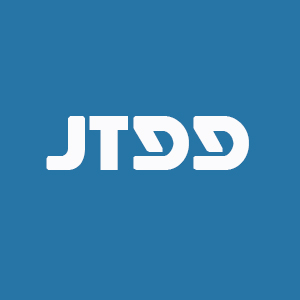REFERENCES
1. Askari H, Kaneski CR, Semino-Mora C, et al. Cellular and tissue localization of globotriaosylceramide in Fabry disease. Virchows Arch 2007;451:823-34.
2. Amodio F, Caiazza M, Monda E, et al. An overview of molecular mechanisms in Fabry disease. Biomolecules 2022;12:1460.
3. Desnick RJ. Chapter 38 - Fabry disease: α-galactosidase a deficiency; In: Rosenberg’s molecular and genetic basis of neurological and psychiatric disease, 5th edition; 2015. pp. 419-30.
4. Schiffmann R, Hughes DA, Linthorst GE, et al. Screening, diagnosis, and management of patients with Fabry disease: conclusions from a “Kidney disease: improving global outcomes” (KDIGO) controversies conference. Kidney Int 2017;91:284-93.
5. Germain DP, Hughes DA, Nicholls K, et al. Treatment of Fabry’s disease with the pharmacologic chaperone migalastat. N Engl J Med 2016;375:545-55.
6. Germain DP, Altarescu G, Barriales-Villa R, et al. An expert consensus on practical clinical recommendations and guidance for patients with classic Fabry disease. Mol Genet Metab 2022;137:49-61.
7. Arends M, Wanner C, Hughes D, et al. Characterization of classical and nonclassical Fabry disease: a multicenter study. J Am Soc Nephrol 2017;28:1631-41.
8. Ramaswami U, Beck M, Hughes D, et al. Cardio- renal outcomes with long- term agalsidase alfa enzyme replacement therapy: a 10- year Fabry outcome survey (FOS) analysis. Drug Des Devel Ther 2019;13:3705-15.
9. Bichet DG, Torra R, Wallace E, et al. Long-term follow-up of renal function in patients treated with migalastat for Fabry disease. Mol Genet Metab Rep 2021;28:100786.
10. Johnson FK, Mudd PN Jr, Bragat A, Adera M, Boudes P. Pharmacokinetics and safety of migalastat HCl and effects on agalsidase activity in healthy volunteers. Clin Pharmacol Drug Dev 2013;2:120-32.
11. Lerario S, Monti L, Ambrosetti I, et al. Fabry disease: a rare disorder calling for personalized medicine. Int Urol Nephrol 2024;56:3161-72.
12. Schiffmann R, Goker-Alpan O, Holida M, et al. Pegunigalsidase alfa, a novel PEGylated enzyme replacement therapy for Fabry disease, provides sustained plasma concentrations and favorable pharmacodynamics: a 1-year Phase 1/2 clinical trial. J Inherit Metab Dis 2019;42:534-44.
13. Cox TM. Innovative treatments for lysosomal diseases. Best Pract Res Clin Endocrinol Metab 2015;29:275-311.
15. Medin JA, Tudor M, Simovitch R, et al. Correction in trans for Fabry disease: expression, secretion and uptake of alpha-galactosidase A in patient-derived cells driven by a high-titer recombinant retroviral vector. Proc Natl Acad Sci USA 1996;93:7917-22.
16. Takenaka T, Qin G, Brady RO, Medin JA. Circulating alpha-galactosidase A derived from transduced bone marrow cells: relevance for corrective gene transfer for Fabry disease. Hum Gene Ther 1999;10:1931-9.
17. Zhu X, Yin L, Theisen M, et al. Systemic mRNA therapy for the treatment of Fabry disease: preclinical studies in wild-type mice, Fabry mouse model, and wild-type non-human primates. Am J Hum Genet 2019;104:625-37.
18. Puri V, Watanabe R, Dominguez M, et al. Cholesterol modulates membrane traffic along the endocytic pathway in sphingolipid-storage diseases. Nat Cell Biol 1999;1:386-8.
19. Schueler U, Kaneski C, Remaley A, et al. A Short Synthetic Peptide Mimetic of Apolipoprotein A1 Mediates Cholesterol and Globotriaosylceramide Efflux from Fabry Fibroblasts. In: Morava E, Baumgartner M, Patterson M, Rahman S, Zschocke J, Peters V, editors. Berlin: Springer Berlin Heidelberg; 2016. pp. 69-75.
20. Biegstraaten M, Arngrímsson R, Barbey F, et al. Recommendations for initiation and cessation of enzyme replacement therapy in patients with Fabry disease: the European Fabry Working Group consensus document. Orphanet J Rare Dis 2015;10:36.
21. Christensen EI, Zhou Q, Sørensen SS, et al. Distribution of α-galactosidase A in normal human kidney and renal accumulation and distribution of recombinant α-galactosidase A in Fabry mice. J Am Soc Nephrol 2007;18:698-706.
22. Prabakaran T, Nielsen R, Larsen JV, et al. Receptor-mediated endocytosis of α-galactosidase A in human podocytes in Fabry disease. PLoS One 2011;6:e25065.
23. Prabakaran T, Nielsen R, Satchell SC, et al. Mannose 6-phosphate receptor and sortilin mediated endocytosis of α-galactosidase A in kidney endothelial cells. PLoS One 2012;7:e39975.
24. Frustaci A, Verardo R, Scialla R, et al. Downregulation of mannose-6-phosphate receptors in Fabry disease cardiomyopathy: a potential target for enzyme therapy enhancement. J Clin Med 2022;11:5440.
25. Tøndel C, Bostad L, Larsen KK, et al. Agalsidase benefits renal histology in young patients with Fabry disease. J Am Soc Nephrol 2013;24:137-48.
26. Banikazemi M, Bultas J, Waldek S, et al. Agalsidase-beta therapy for advanced Fabry disease: a randomized trial. Ann Intern Med 2007;146:77-86.
27. Weidemann F, Breunig F, Beer M, et al. Improvement of cardiac function during enzyme replacement therapy in patients with Fabry disease: a prospective strain rate imaging study. Circulation 2003;108:1299-301.
28. van Breemen MJ, Rombach SM, Dekker N, et al. Reduction of elevated plasma globotriaosylsphingosine in patients with classic Fabry disease following enzyme replacement therapy. Biochim Biophys Acta 2011;1812:70-6.
29. Arends M, Wijburg FA, Wanner C, et al. Favourable effect of early versus late start of enzyme replacement therapy on plasma globotriaosylsphingosine levels in men with classical Fabry disease. Mol Genet Metab 2017;121:157-61.
30. Auray-Blais C, Lavoie P, Boutin M, et al. Biomarkers associated with clinical manifestations in Fabry disease patients with a late-onset cardiac variant mutation. Clin Chim Acta 2017;466:185-93.
31. Nowak A, Beuschlein F, Sivasubramaniam V, Kasper D, Warnock DG. Lyso-Gb3 associates with adverse long-term outcome in patients with Fabry disease. J Med Genet 2022;59:287-93.
32. Messalli G, Imbriaco M, Avitabile G, et al. Role of cardiac MRI in evaluating patients with Anderson-Fabry disease: assessing cardiac effects of long-term enzyme replacement therapy. Radiol Med 2012;117:19-28.
33. Tøndel C, Thurberg BL, DasMahapatra P, et al. Clinical relevance of globotriaosylceramide accumulation in Fabry disease and the effect of agalsidase beta in affected tissues. Mol Genet Metab 2022;137:328-41.
34. Germain DP, Waldek S, Banikazemi M, et al. Sustained, long-term renal stabilization after 54 months of agalsidase beta therapy in patients with Fabry disease. J Am Soc Nephrol 2007;18:1547-57.
35. Sirrs SM, Bichet DG, Casey R, et al. Outcomes of patients treated through the Canadian Fabry disease initiative. Mol Genet Metab 2014;111:499-506.
36. Arends M, Biegstraaten M, Wanner C, et al. Agalsidase alfa versus agalsidase beta for the treatment of Fabry disease: an international cohort study. J Med Genet 2018;55:351-8.
37. Mauhin W, Lidove O, Amelin D, et al. Deep characterization of the anti-drug antibodies developed in Fabry disease patients, a prospective analysis from the French multicenter cohort FFABRY. Orphanet J Rare Dis 2018;13:127.
38. Beck M, Hughes D, Kampmann C, et al. Long-term effectiveness of agalsidase alfa enzyme replacement in Fabry disease: a Fabry outcome survey analysis. Mol Genet Metab Rep 2015;3:21-7.
39. Kampmann C, Perrin A, Beck M. Effectiveness of agalsidase alfa enzyme replacement in Fabry disease: cardiac outcomes after 10 years’ treatment. Orphanet J Rare Dis 2015;10:125.
40. Tsuboi K, Yamamoto H. Clinical observation of patients with Fabry disease after switching from agalsidase beta (Fabrazyme) to agalsidase alfa (Replagal). Genet Med 2012;14:779-86.
41. Hughes DA, Elliott PM, Shah J, et al. Effects of enzyme replacement therapy on the cardiomyopathy of Anderson-Fabry disease: a randomised, double-blind, placebo-controlled clinical trial of agalsidase alfa. Heart 2008;94:153-8.
42. Azevedo O, Gago MF, Miltenberger-Miltenyi G, Sousa N, Cunha D. Fabry disease therapy: state-of-the-art and current challenges. Int J Mol Sci 2020;22:206.
43. Kizhner T, Azulay Y, Hainrichson M, et al. Characterization of a chemically modified plant cell culture expressed human α-Galactosidase-A enzyme for treatment of Fabry disease. Mol Genet Metab 2015;114:259-67.
44. Wallace EL, Goker-Alpan O, Wilcox WR, et al. Head-to-head trial of pegunigalsidase alfa versus agalsidase beta in patients with Fabry disease and deteriorating renal function: results from the 2-year randomised phase III BALANCE study. J Med Genet 2024;61:520-30.
45. Linhart A, Dostálová G, Nicholls K, et al. Safety and efficacy of pegunigalsidase alfa in patients with Fabry disease who were previously treated with agalsidase alfa: results from BRIDGE, a phase 3 open-label study. Orphanet J Rare Dis 2023;18:332.
46. Bernat J, Holida M, Longo N, et al. eP149: safety and efficacy of pegunigalsidase alfa, every 4 weeks, in Fabry disease: results from the phase 3, open-label, BRIGHT study. Genet Med 2022;24:S91-2.
47. Germain DP, Linhart A. Pegunigalsidase alfa: a novel, pegylated recombinant alpha-galactosidase enzyme for the treatment of Fabry disease. Front Genet 2024;15:1395287.
48. Nowak A, Huynh-Do U, Krayenbuehl PA, Beuschlein F, Schiffmann R, Barbey F. Fabry disease genotype, phenotype, and migalastat amenability: insights from a national cohort. J Inherit Metab Dis 2020;43:326-33.
49. Fan JQ, Ishii S, Asano N, Suzuki Y. Accelerated transport and maturation of lysosomal alpha-galactosidase A in Fabry lymphoblasts by an enzyme inhibitor. Nat Med 1999;5:112-5.
51. Mauer M, Sokolovskiy A, Barth JA, et al. Reduction of podocyte globotriaosylceramide content in adult male patients with Fabry disease with amenable GLA mutations following 6 months of migalastat treatment. J Med Genet 2017;54:781-6.
52. Hughes DA, Nicholls K, Shankar SP, et al. Oral pharmacological chaperone migalastat compared with enzyme replacement therapy in Fabry disease: 18-month results from the randomised phase III ATTRACT study. J Med Genet 2017;54:288-96.
53. Hughes DA, Bichet DG, Giugliani R, et al. Long-term multisystemic efficacy of migalastat on Fabry-associated clinical events, including renal, cardiac and cerebrovascular outcomes. J Med Genet 2023;60:722-31.
54. Young-Gqamana B, Brignol N, Chang HH, et al. Migalastat HCl reduces globotriaosylsphingosine (lyso-Gb3) in Fabry transgenic mice and in the plasma of Fabry patients. PLoS One 2013;8:e57631.
55. Nowicki M, Bazan-Socha S, Błażejewska-Hyżorek B, et al. Polish Fabry Disease Collaborative Group. A review and recommendations for oral chaperone therapy in adult patients with Fabry disease. Orphanet J Rare Dis 2024;19:16.
56. Shen JS, Busch A, Day TS, et al. Mannose receptor-mediated delivery of moss-made α-galactosidase A efficiently corrects enzyme deficiency in Fabry mice. J Inherit Metab Dis 2016;39:293-303.
57. Hennermann JB, Arash-Kaps L, Fekete G, Schaaf A, Busch A, Frischmuth T. Pharmacokinetics, pharmacodynamics, and safety of moss-aGalactosidase A in patients with Fabry disease. J Inherit Metab Dis 2019;42:527-33.
58. Palaiodimou L, Kokotis P, Zompola C, et al. Fabry disease: current and novel therapeutic strategies. A narrative review. Curr Neuropharmacol 2023;21:440-56.
59. Ashe KM, Budman E, Bangari DS, et al. Efficacy of enzyme and substrate reduction therapy with a novel antagonist of glucosylceramide synthase for Fabry disease. Mol Med 2015;21:389-99.
60. Peterschmitt MJ, Crawford NPS, Gaemers SJM, Ji AJ, Sharma J, Pham TT. Pharmacokinetics, pharmacodynamics, safety, and tolerability of oral venglustat in healthy volunteers. Clin Pharmacol Drug Dev 2021;10:86-98.
61. Deegan PB, Goker-Alpan O, Geberhiwot T, et al. Venglustat, an orally administered glucosylceramide synthase inhibitor: assessment over 3 years in adult males with classic Fabry disease in an open-label phase 2 study and its extension study. Mol Genet Metab 2023;138:106963.
62. A study to evaluate the effect of venglustat tablets on left ventricular mass index in male and female adult participants with fabry disease (CARAT); 2024. NCT05280548. Available from: https://www.clinicaltrials.gov/study/NCT05280548#eligibility [Last accessed on 19 Nov 2024]
63. A study to evaluate the effect of venglustat tablets on neuropathic and abdominal pain in male and female participants ≥ 16 years of age with fabry disease (PERIDOT); 2024, NCT05206773. Available from: https://www.clinicaltrials.gov/study/NCT05206773?term=NCT05206773&rank=1 [Last accessed on 19 Nov 2024]
64. Guérard N, Morand O, Dingemanse J. Lucerastat, an iminosugar with potential as substrate reduction therapy for glycolipid storage disorders: safety, tolerability, and pharmacokinetics in healthy subjects. Orphanet J Rare Dis 2017;12:9.
65. Guérard N, Oder D, Nordbeck P, et al. Lucerastat, an iminosugar for substrate reduction therapy: tolerability, pharmacodynamics, and pharmacokinetics in patients with Fabry disease on enzyme replacement. Clin Pharmacol Ther 2018;103:703-11.
66. A multicenter, double-blind, randomized, placebo-controlled, parallel-group study to determine the efficacy and safety of lucerastat oral monotherapy in adult subjects with Fabry disease; 2018, NCT03425539. Available from: https://clinicaltrials.gov/study/NCT03425539?term=%20NCT03425539&rank=1 [Last accessed on 19 Nov 2024]
67. Khan A, Barber DL, Huang J, et al. Lentivirus-mediated gene therapy for Fabry disease. Nat Commun 2021;12:1178.
68. Ziegler RJ, Yew NS, Li C, et al. Correction of enzymatic and lysosomal storage defects in Fabry mice by adenovirus-mediated gene transfer. Hum Gene Ther 1999;10:1667-82.
69. An open-label, phase 1/2a trial of gene therapy 4D-310 in adults with Fabry disease and cardiac involvement; 2022, NCT05629559. Available from: https://clinicaltrials.gov/study/NCT05629559?term=NCT05629559&rank=1 [Last accessed on 19 Nov 2024]
70. A phase I/II, multicenter, open-label, single-dose, dose-ranging study to assess the safety and tolerability of ST-920, an AAV2/6 human alpha galactosidase a gene therapy, in subjects with Fabry disease (STAAR); 2019, NCT04046224. Available from: https://clinicaltrials.gov/study/NCT04046224?term=NCT04046224&rank=1 [Last accessed on 19 Nov 2024]
71. A phase 1/2, baseline-controlled, non-randomized, open-label, single-ascending dose study of a novel adeno-associated viral vector (FLT190) in patients with Fabry disease; 2019, NCT04040049. Available from: https://clinicaltrials.gov/study/NCT04040049?term=NCT04040049&rank=1 [Last accessed on 19 Nov 2024]
72. Ortiz A, Germain DP, Desnick RJ, et al. Fabry disease revisited: management and treatment recommendations for adult patients. Mol Genet Metab 2018;123:416-27.
73. Kidney Disease: Improving Global Outcomes (KDIGO) CKD Work Group. KDIGO 2024 clinical practice guideline for the evaluation and management of chronic kidney disease. Kidney Int 2024;105:S117-314.
74. O’Mahony C, Coats C, Cardona M, et al. Incidence and predictors of anti-bradycardia pacing in patients with Anderson-Fabry disease. Europace 2011;13:1781-8.
75. Weidemann F, Maier SK, Störk S, et al. Usefulness of an implantable loop recorder to detect clinically relevant arrhythmias in patients with advanced Fabry cardiomyopathy. Am J Cardiol 2016;118:264-74.
76. Eng CM, Germain DP, Banikazemi M, et al. Fabry disease: guidelines for the evaluation and management of multi-organ system involvement. Genet Med 2006;8:539-48.
77. Politei JM, Bouhassira D, Germain DP, et al. Pain in Fabry disease: practical recommendations for diagnosis and treatment. CNS Neurosci Ther 2016;22:568-76.
78. Mujagic Z, Keszthelyi D, Aziz Q, et al. Systematic review: instruments to assess abdominal pain in irritable bowel syndrome. Aliment Pharmacol Ther 2015;42:1064-81.
79. Hoffmann B, Schwarz M, Mehta A, Keshav S. Fabry Outcome Survey European Investigators. Gastrointestinal symptoms in 342 patients with Fabry disease: prevalence and response to enzyme replacement therapy. Clin Gastroenterol Hepatol 2007;5:1447-53.
80. Svensson CK, Feldt-Rasmussen U, Backer V. Fabry disease, respiratory symptoms, and airway limitation - a systematic review. Eur Clin Respir J 2015;2:26721.
81. Germain DP, Avan P, Chassaing A, Bonfils P. Patients affected with Fabry disease have an increased incidence of progressive hearing loss and sudden deafness: an investigation of twenty-two hemizygous male patients. BMC Med Genet 2002;3:10.
82. Lidove O, Jaussaud R, Aractingi S. Dermatological and soft-tissue manifestations of Fabry disease: characteristics and response to enzyme replacement therapy. In: Mehta A, Beck M, Sunder-Plassmann G, editors. Fabry disease: perspectives from 5 years of FOS. Oxford: Oxford PharmaGenesis; 2006.









